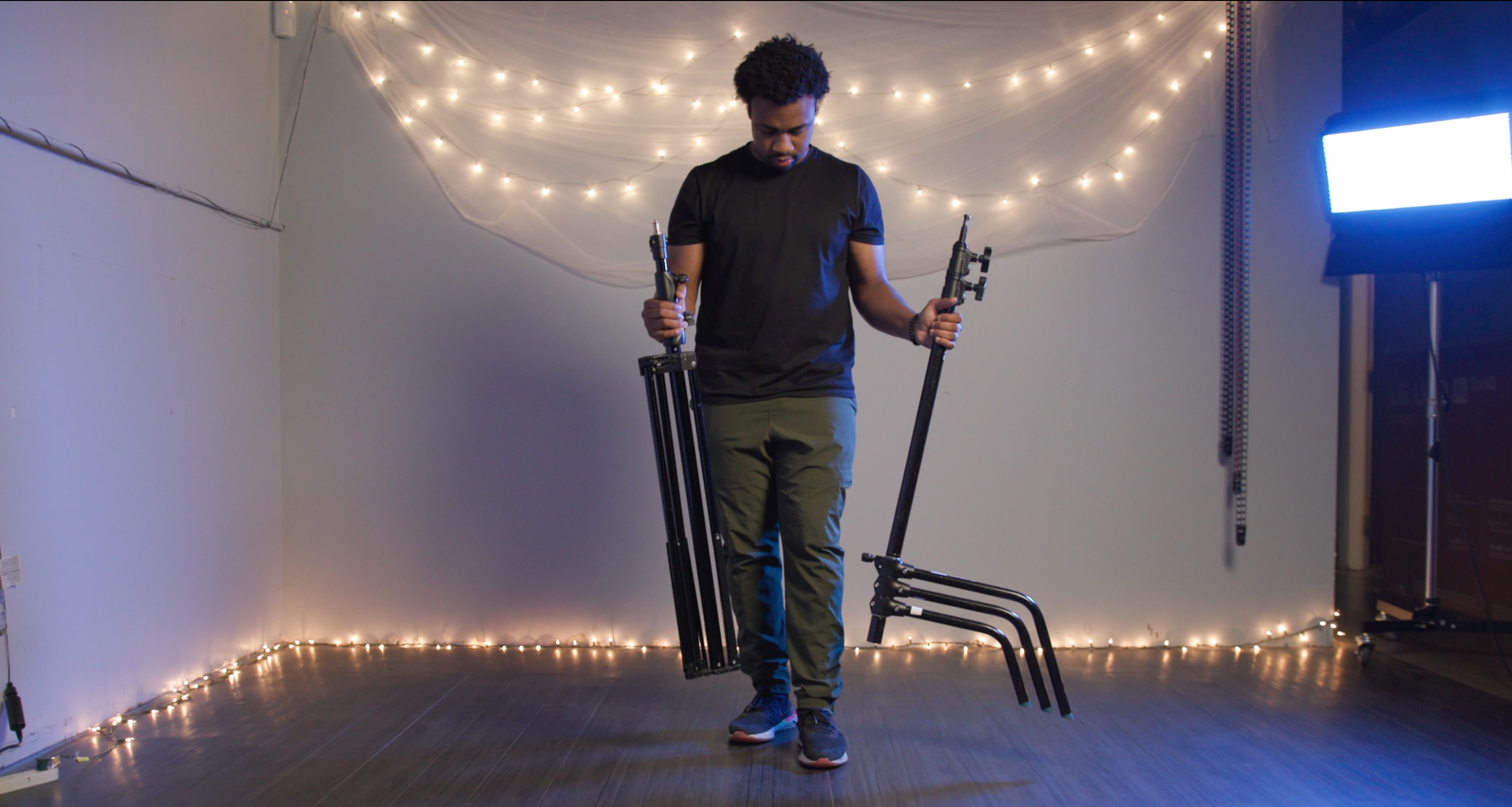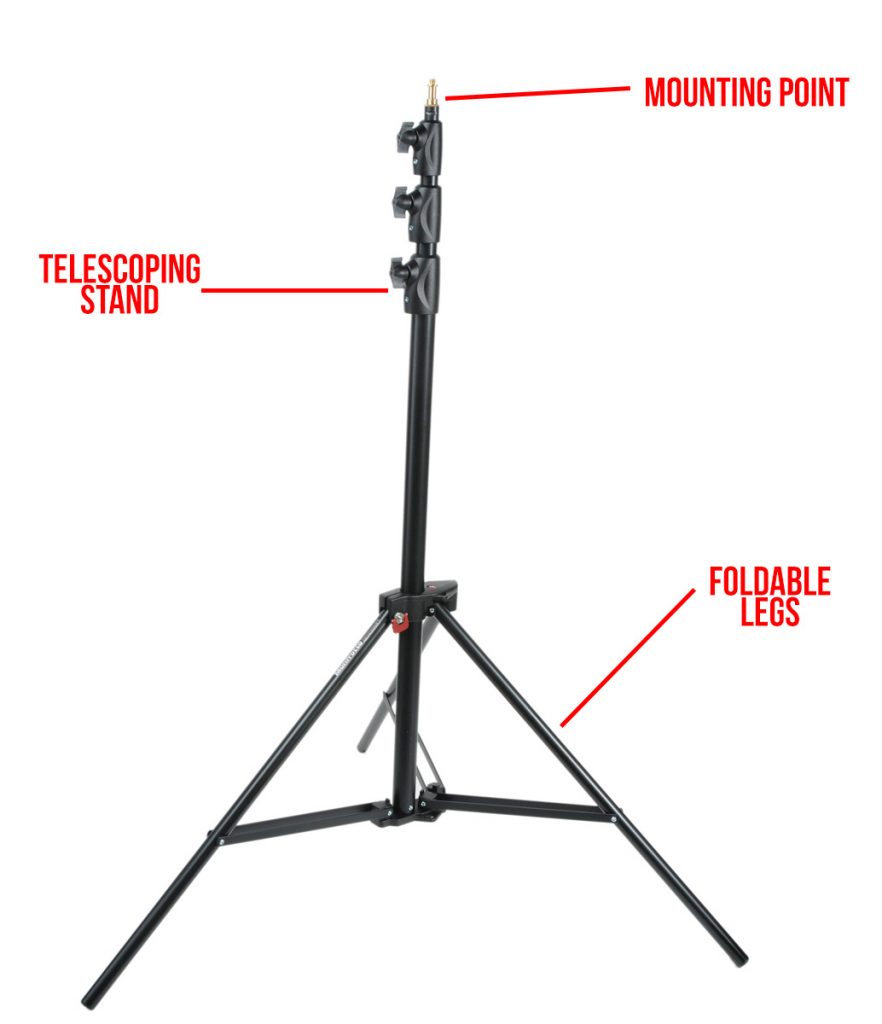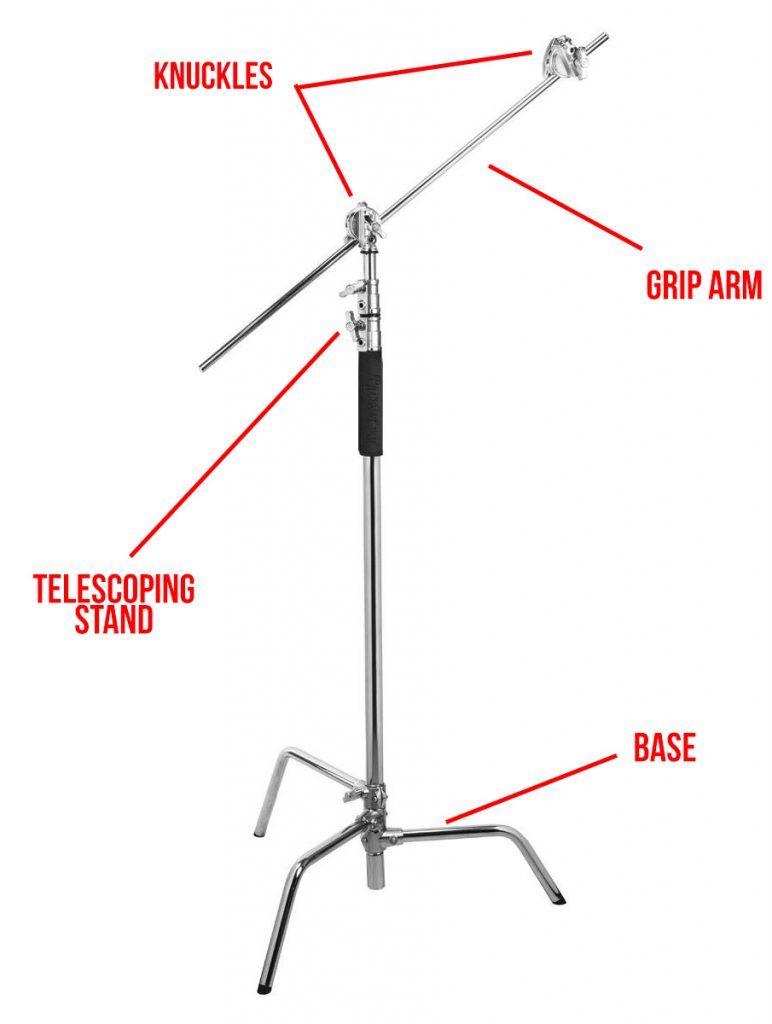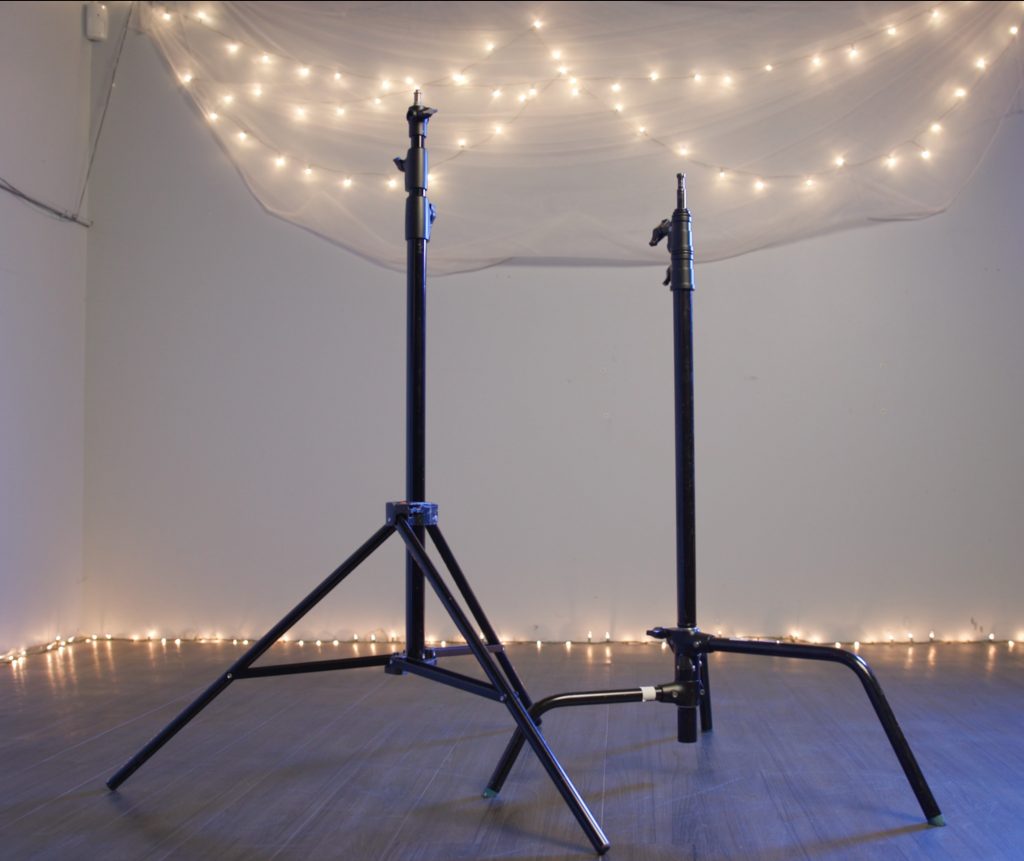Equipment
Lightstands Versus C-Stands? When you Should Choose One Over the Other

When you start diving into the world of studio lighting, you’ll run into a little bit of confusion when it comes to stands – particularly lightstands verse C-stands. If you’re the type who just asks “So which one is best? I’ll buy that one”, you’ll likely be even more frustrated because it’s not a question that can be answered so succinctly. So let’s dive into the differences between the two and find the best use-case scenario for each.
What is a Lightstand?
Of the two, the most common, in personal studios and equipment at least, is the trusty lightstand. Lightstands are pretty simple in design, allowing you to fold the stand with ease, and transport it from location and location. Designed to be lightweight, lightstands often have fairly limiting weight capacities, but should be more than enough if you’re just looking for something to hold a studio strobe and medium softbox for a few hours.

While they can fold up and compact down into a smaller footprint, they do have a larger footprint than C-stands when in use, which can clutter up smaller spaces and make for a tripping hazard. But both stands should also be paired with a sandbag, to assure that thousands of dollars of gear isn’t tumbling to the ground.
What is a C-Stand?
A Century Stand, or commonly called C-stand is a bit different in design than a traditional lightstand, but they largely function in the same way – they hold a light at the top, and the telescoping pole system allows the lights to be raised or lowered with tension mounts. Traditionally though, C-stands are beefier, and made out of stainless steel, whereas lightstands are usually made out of aluminum or other lightweight materials. Additionally, a C-stand will look quite a bit different in its design. Each leg of a c-stand will have a bend in them, reducing the physical footprint of the stand, and being able to hold more weight off-axis (when used correctly).

C-stands also have quite a few additional parts to them than a lightstand will. Whereas lightstands have their risers, legs, and mounting point, C-stands usually come with an arm, as well as a couple of added mounting systems, referred to as knuckles. These knuckles allow for you to mount a larger variety of light modifiers and lights, and paired with an added boom arm, a C-stand will maximize the flexibility of use, allowing you to position lights in far more angles and ways.
So Which is Better?
A common question for those getting into lighting, and looking to invest into mounting systems, is to just ask frankly which one is better, and unfortunately, there isn’t a concrete answer. It’s easy to say that C-stands are better, in nothing else for their use case, and that a good quality C-stand will outlive a long career, but you’ll find that you’ll likely end up with both C-stands and lightstands strung about a studio.

Benefits of a Lightstand over a C-Stand
- Lightweight and easier to transport
- Generally far cheaper
- Far more variety in sizes
Benefits of C-Stand of Lightstand
- Higher weight capacity and better build quality
- Generally smaller footprint (when set up)
- Boom Arm allows for additional light positioning
Which Lightstand(s) Should I Buy?
Most studios will have a combination of both lightstands and C-stands, as each one has its own use-case benefit. However, not all lightstands and c-stands are created equal, and so I have a short list of recommendations for each. For starters, the Manfrotto 1004BAC is an excellent stand that I’ve personally used and recommended for years. If you’re looking for smaller stands, then I’d recommend stands from the brands Manfrotto, Avenger, Kupo, and Matthews, while avoiding cheaper brands like Impact, Neewer, or Amazon Basics.
Which C-stand(s) should I Buy?
Like lightstands, there is a pretty broad range of stands available, but admittedly limited in size options available. In short, most C-stands come in two sizes – standard (10-12′), and small (4-5′), and you’ll likely want a couple of each. Again, like lightstands, C-stands have a pretty broad range in terms of quality, and a quality C-stand, while costing you more, will work for you trouble-free for decades. Brands I’ve personally used and recommend are Matthews, Kupo, Manfrotto, and Avenger. Brands I would avoid would be Impact, Neewer, or other brands you may not have heard of before.
Do you have anything else to add? Feel free to chime in with your advice and tips in the comments below.
Author: Lensrentals
Articles written by the entire editorial and technical staff at LensRentals.com. These articles are for when there is more than one author for the entire post, and are written as a community effort.-
Franz Graphstill
-
KeithB
-
Shane Castle
-
# WLM
